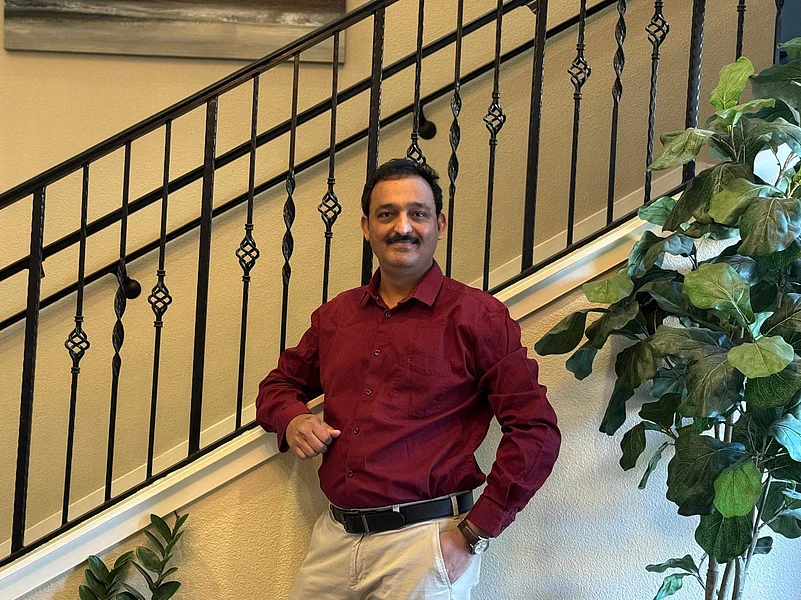As cloud infrastructure becomes the backbone of modern enterprise operations, securing this digital frontier has evolved into a multidimensional challenge. The traditional perimeter-based defenses are no longer sufficient in the face of increasingly sophisticated cyber threats. Artificial intelligence and generative AI (GenAI) are now being explored for their potential role in how organizations detect, respond to, and mitigate security risks in cloud environments. From real-time anomaly detection to predictive threat modeling, AI is augmenting human capabilities and automating complex workflows, enabling faster and more accurate security decisions.
Siva Kumar Mamillapalli specializes in L2/L3 networking, cloud architecture, and integrating applications with AI and GenAI services on AWS. He leads company-level PoCs, manages complex technical programs, and mentors engineering teams, contributing to innovation and operational effectiveness in enterprise cloud and networking initiatives.
As a Principal Cloud Architect, has been involved in this transformation. With years of hands-on experience integrating AWS AI and GenAI services into enterprise security frameworks, he has contributed to initiatives that extend traditional cloud security practices. “AI-driven automation is a game-changer,” he explains. “It allows organizations to scale security operations without scaling overheads, ensuring we stay a step ahead of evolving threats.”
He participated in the integration of anomaly detection systems within a hybrid cloud setup, improving threat identification and response time by 40%. Through the strategic use of tools like AWS GuardDuty, Amazon Macie, and SageMaker, he reduced false positives by 30% and manual intervention by 60%, effectively increasing the resilience and efficiency of security teams. His work also includes collaborative efforts with AWS services such as Amazon Detective, resulting in high-accuracy security models that support enterprise-grade risk assessment.
A key milestone for him was the design of an AI-powered risk assessment framework tailored for hybrid cloud environments. This initiative led to a 30% reduction in security vulnerabilities and accelerated incident response timelines. “We needed a system that could think, adapt, and respond faster than any human-led process. AI gave us that edge,” he shares.
He shared that the deployment of automated security workflows cut operational security costs by 25%, while also slashing response times to critical incidents by 50%. By refining threat mitigation strategies, he enabled teams to redirect focus from repetitive tasks to strategic security planning.
Among his notable projects is an AI-enhanced incident response system that automates the detection-to-resolution cycle. This tool reduced resolution times by half and empowered security analysts to make informed decisions faster. “We weren’t just detecting attacks, we were learning from them in real time and updating our models accordingly,” he notes.
Mamillapalli has also contributed to the academic discourse on AI in cyber-security. His peer-reviewed publication, “AI-Driven Threat Modeling for Cloud Security Ecosystems”, published in the International Journal of Science and Technology, emphasizes scalable AI architectures for real-time protection in distributed systems.
However, this journey was not without its challenges. Tackling the plague of false positives in automated alerts proved especially difficult. "At one point, the team was inundated with alerts that turned out to be noise," he recalls. By refining detection algorithms with GenAI personalization, he achieved a 30% drop in irrelevant alerts, freeing up critical analyst bandwidth and improving focus on high-priority threats. Additionally, scaling AI models across large data pipelines required meticulous optimization to avoid ballooning costs. Using cloud-native scaling features, he maintained performance while keeping expenses under control.
Looking ahead, he envisions a future where self-healing systems, capable of autonomously defending, adapting, and strengthening security postures, become the norm. He predicts that serverless architectures and edge computing will further catalyze this evolution. “Edge computing improves both speed and local resilience, especially during disruptions like DDoS attacks or network failures,” he explains.
He also emphasizes a crucial organizational insight: AI security tools cannot operate in silos. “Cross-functional collaboration between data science, IT, and security teams is critical. These models must be constantly retrained and adapted to maintain their relevance,” he adds, cautioning against the risks of model drift.
As the global market for enterprise Agile planning and AI-integrated tools grows, expected to grow from USD 1.84 billion in 2024 to USD 16.7 billion by 2033, it’s apparent that professionals like Mamillapalli are contributing to secure, intelligent cloud transformation.
In a world where cyber threats evolve faster than policy manuals can be updated, Siva Kumar Mamillapalli’s work reflects a thoughtful, practical, and collaborative approach that modern cybersecurity requires. His efforts are helping protect enterprise assets and contributing to a future where AI plays a central role in security.
About Siva Kumar Mamillapalli:
Siva Kumar Mamillapalli is a Principal Cloud Architect specializing in L2/L3 networking, AI/GenAI integration, and cloud security on AWS. With experience in designing AI-powered security frameworks, he has led initiatives that reduced threat response times, false positives, and operational costs across hybrid cloud environments. His work involves using tools like AWS GuardDuty, Macie, and SageMaker for enterprise-grade cybersecurity. As a published author, Siva advocates for cross-functional collaboration and adaptive AI systems. His work contributes to developing intelligent, self-healing cloud infrastructures and modern cybersecurity strategies.














